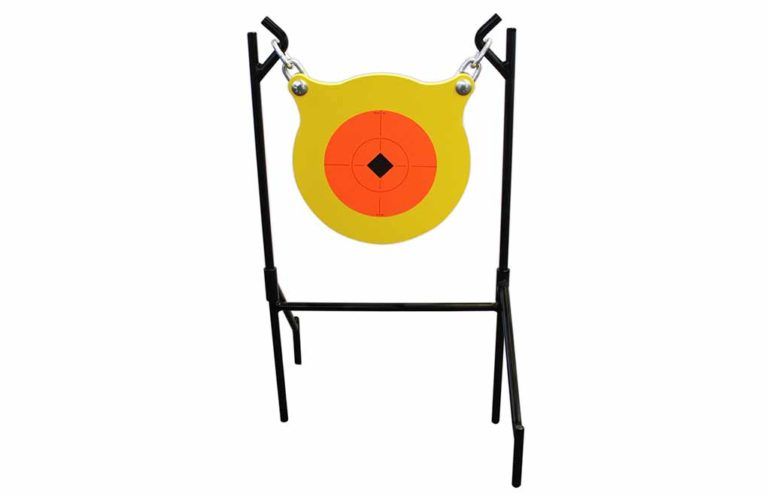
Nothing is as sweet as the sound of copper-jacketed lead slamming into hardened steel. With a quality AR500 steel target, you’re sure to enjoy this satisfying ping for years to come.
Why You Should Shoot AR500 Steel Targets:
- Given their hardness, they are suitable for both rifles and pistols.
- For high-volume shooters they are economical, costing less per trigger pull.
- Easy to set up, AR500 steel targets offer you an infinite variety of courses of fire.
- They’ll last for years if you take care of them.
- Three words: Just. Plain. Fun.
Certainly, paper targets have their place. Heck, we’ve all been using them for decades. When zeroing your rifle for hunting season or analyzing the grouping of a new load you’ve worked up, the neat and useful grid of a sighting-in target can prove invaluable. But, over the years, the ol’ shooting-range standby hasn’t proven infallible to the march of progress. If you’re familiar with the sweet sound of copper-jacketed lead striking plate steel, then you already know exactly what I’m talking about.
Over the years, steel targets have become an increasingly popular option when it comes to pitching lead – pistol, rifle or otherwise. And while there are plenty of options on the market, they aren’t all created equal. Given that you’re throwing bits of metal at or close to the speed of sound, you need something capable of withstanding the punishment, while at the same time keeping you safe.
If you’ve done any shopping for steel targets, you’ve most likely heard or seen “AR500” crop up. But what exactly does it mean? Why should you care? And, what role does it play in getting the best steel to pelt away at with your favorite firearm?
Let’s find out.
What Is AR500?
Steel, like most materials, comes in grades. Those familiar with AR-15 builds are particularly cognizant of this, given they want to get not only the best barrel steel possible but also receiver aluminum. Be it for a gun barrel or a blade for your ATV, grading of these metals makes this process much simpler and more straight-forward.
In the case of steel, much of the grading deals with the metal’s composition, its alloy, suitability for certain purposes and machinability. For steel plate, which is the stuff targets are made of, grading has much to do with its toughness. Enter the AR500 designation.
Get On Target With These Posts:
- How To Select The Best Shooting Targets For Your Needs
- 5 Best Steel Targets For Years Of Shooting Fun
- Best Pistol Targets To Sharpen Your Handgun Skills
While it might sound like the plate steel is specially designed for America’s favorite rifle, the “AR” in AR500 actually refers to its primary physical property – abrasion resistance. The other half of the grade – 500 – connotates its certified Brinell hardness. Brinell testing is accomplished by impacting the steel plate with ball bearings to determine if it will chip or crack.
In the scheme of AR steel, AR500 is pretty dang tough, resisting denting, chipping and cracking. In addition to steel targets, AR500 is called in for some other rough duty: crushers, rock hammers, grapples, mining equipment and even armor. In short, it’s the perfect stuff to throw bullets at.
While longevity is one reason why AR500 is used in steel targets, there’s a more important factor that makes it preferred. Its toughness keeps its surface uniform, which in terms of shooting ensures a bullet doesn’t go flying somewhere it shouldn’t after impact. If AR500 steel targets deformed or were prone to pockmarks, the chance of a ricochet would increase and, tongue in cheek, they’d be a lot less fun.
As a side benefit, AR500 steel is fairly easy to work with … if you have the right tools. In turn, you the shooter aren’t limited to taking aim at little more than square plates. Peruse AR500 steel targets sometime if you haven’t already, and you’ll see the wealth of options. They're available in every conceivable shape and size – from enormous 16-inch-diameter round gongs to 6-inch-tall prairie dog silhouettes. At this point, the sky is the limit when it comes to styles of AR500 targets.
Why Shoot Steel?
If you’ve been perforating paper for the better part of your life, you might not believe you’ll get any more out of a good slab of AR500. That’s where we politely say, “You’re wrong.”
To start, they’re economical. Yes, you have to invest more on the front end, but with proper care, AR500 targets will last you years. This is especially true if you shoot a lot. Throw enough lead downrange and a good AR500 target can and will eventually run on par with many paper options – particularly the fancier ones.
Furthermore, AR500 targets provide instant feedback – usually. If you place one a country mile, you might have difficulty hearing your bullet’s impact, but that’s generally the only time. Even at 100 to 200 yards, an AR500 target will ring clear enough that you’ll hear your hit.
Honestly, steel targets are more versatile than almost every other type. Buy a number of them, and you can create your own course of fire. Invest in a dueling tree and you have the perfect system for you and a buddy to push each other to the limits.
Finally, they’re just plain fun. Look, everyone loves a tight little cloverleaf printed on paper, but even that pales to the sweet “Ping!” of steel.
Considerations In Buying AR500 Targets
Like a paper target designed to pattern your turkey gun would prove inadequate for long-range work, not every style of AR500 steel target excels for every shooting application. Sure, you might save money by buying a 4-inch round gong, but is that the ideal size when you're working your way up to a 1,000-yard rifle shot? Conversely, do you really need to shell out for a 17-inch tall silhouette if you’re setting up a causal pistol shooting course on your land?
This isn’t to say that a falling popper wouldn’t work as a rifle target – they’re plenty of fun when downrange from an AR. But to get the most enjoyment, you should aim for AR500 targets that work well at the range you anticipate shooting … and with the guns you plan to use.
The other consideration, one that has a direct impact on your wallet, is the thickness of the AR500 target you choose. Thicker is more expensive because you’re buying more AR500 material, but it required with some hard-punching cartridges. If you plan on exclusively running a .22 pistol, a 5/8-inch thick target is a considerable overkill.
Luckily, there are some general industry suggestions for AR500 target thickness based on a bullet’s energy:
| Minimum Target Thickness | Energy (ft/lbs.) |
| ¼-inch-thick | 300-700 |
| 3/8-inch-thick | 700-2,100 |
| ½-inch-thich | 2,100-4,000 |
| 5/8-inch-thick | 4,000-10,000 |
As you’ve probably deduced, you don’t necessarily have to shop AR500 targets at the top end of a bullet’s potential energy.
If you shoot, say, a 180-grain .30-06 round that leaves the muzzle at a middling 2,500 fps, at a few feet beyond 100 yards its energy is safe for a 3/8-inch thick target. On the other hand, it would not be advisable to throw a hot 162-grain 7mm Rem. Mag. round moving 3,200 fps at the target at the same distance. You either have to move the 3/8-inch target out to 200 yards to maintain its integrity or move up to a thicker, ½-inch target.
Safely Shooting AR500 Targets
Using AR500 targets isn’t exactly rocket science. At the same tick, there are certain precautions you must take to protect them and yourself.
The easiest part is buying a reputable brand you can trust. Birchwood Casey, among others, makes solid choices. They are built with longevity and safety in mind. Next up, you need to make sure the target is AR500 or the next level up in hardness AR550. Anything below this – AR400, etc. – is too soft and can yield unpredictable results.
A high-quality target is only one part of the equation: Using it properly is the other.
Always – I repeat, ALWAYS – follow the manufacturer’s instructions on setting up your steel target. They specify how close is safe for the type of firearm you’re shooting, as well as how to properly angle the target so the remain fragments of the bullet are safely deflected. You shouldn’t veer from these standards; the manufacturers have set them up to keep you safe and sound.
You must also use proper ammo. In particular, steel-core bullets are a no-no, as are solid copper. These projectiles can damage your target or, even more dangerous, penetrate it.
AR500 steel targets are designed to work with copper-jacketed lead and frangible bullets, so it’s smart to keep it that way. Thankfully, there’s a wealth of this ammo to shoot.
Finally, you need to get into a regular maintenance routine with your AR500 targets. Now, don’t clench your teeth: It isn’t much. Mainly, you want to inspect them before each use to ensure the surface is uniform and hasn’t developed any inconsistency that could result in a dangerous ricochet.
Furthermore, you should get into the habit of painting your target after every use. Even something as tough as AR500 has its weaknesses, and like all steel, without a proper coating it will rust over time. Besides, a quick hit with the rattle can makes it all the easier to see where you’re connecting, particularly at distance.
Parting Shot
Investing in solid AR500 targets might seem a bit pricy, especially compared to a stack of the regular old paper variety. But they’ll pay you back the first time you send a round flying. Beyond economics, AR500 targets are solid training tools, known for their longevity and ongoing ability to provide just plain fun.
Above all … “Ping!”
Try it: You’ll instantly know what we mean.
Suggested AR500 Steel Target
World of Targets 10-inch AR500 Gong
A must-have for any shooter is a gong. Perfect for setting up a backyard shooting (if you don’t live in town) or taking on the road to your favorite shooting spot, these simple steel plates are as versatile as they come.
Plain as it is enjoyable, Birchwood Casey’s 10-inch gong is ideal. The AR500 target is 3/8-inch thick, in turn, it can stand up to both pistol and rifle fire. Additionally, it is right-sized for almost any range.
It’s not too big for close quarters handgun work and not too small for some distance fire with your rifle. Plus, if you take care of it right, you’ll get nearly a lifetime out of this workhorse.
The only question remaining is how many you’ll add to your collection.
Surplus AR500 Silhouette Target Package
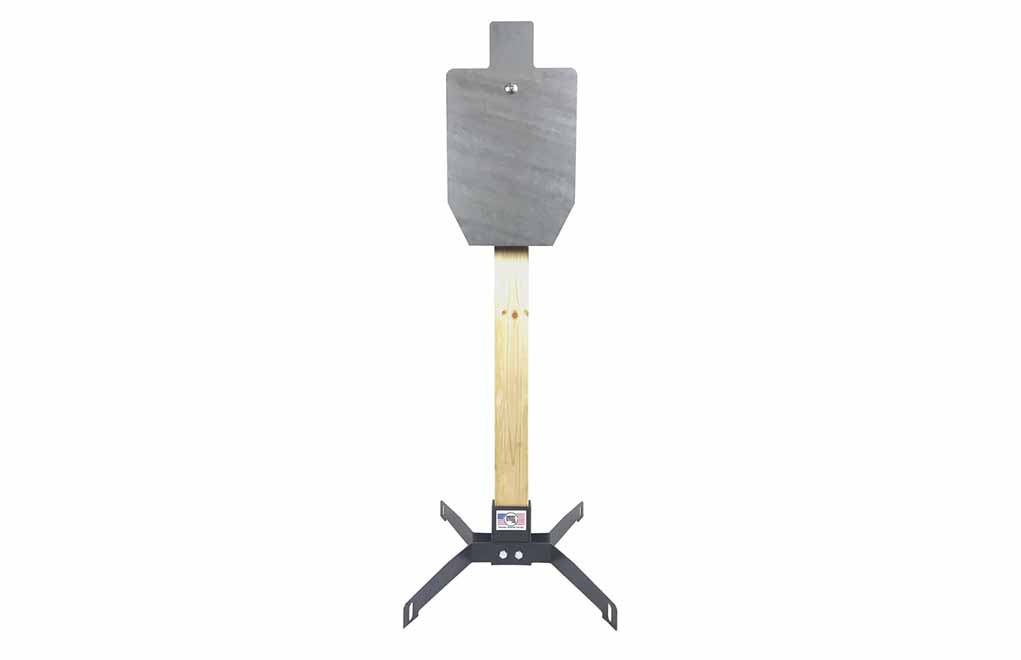
Live near public lands or have enough space on your own parcel, a steel silhouette target is an ideal choice for self-defense training. They take a licking and keep on ticking. And few manufacturers turn out a better product than Shoot Steel.
Made from high-quality 3/8-inch AR500 plate steel, the company’s 12”x20” static silhouette package is perfect to get you training out of the box. In addition to the target proper, the setup comes with a sturdy stand and mounting hardware. All you need to provide is a 2×4 piece of lumber.
In addition to lasting nearly a lifetime, the A500 silhouette is a training enhancement. Not only does it give you visual feedback, but also auditory with that sweet ‘Ping’.
High Caliber AR500 Animal Silhouette Targets

Hey, no reason why pistoleers should have all the fun. Hunter can benefit from steel targets as well, and there is no better choice than High Caliber AR500 game silhouettes. Available in a variety of game animals—from prairie dogs to deer, even bigfoot—the targets are ideal for sharpening your skills to fill your tag.
Thicker—a full 1/2 -inch of AR500 plate steel—the targets absorb the impact from most high-power hunting rifles, of course at appropriate distances. And available in different sizes, the range doesn’t isn't such a constraint on getting a true-to-life shooting experience.
In addition to longevity, like other steel targets, High Caliber game silhouettes offer instant feedback. Plus, they’re a heck of a lot more fun than just plinking away at a grid target just before the season.
Magnum Targets 1/2 Scale IHMSA/NRA Metallic Silhouette Targets

No joke, Metallic Silhouette Shooting is a real bear. Hey, you try hitting a 28-inch tall chicken silhouette at 200 yards with a large-bore handgun. Yet, you needn’t drive yourself mad in competition to enjoy the classic targets used in International Handgun Metallic Shooting Association (IHMSA) matches.
Available in a single bundle, half-scale versions of the official targets are perfect for hours of pistol and rifle shooting fun. Yes, these are 3/8-inch thick AR500 steel, but at the right distance can endure rifle fire. But the stands are fine enough they’ll knock over with a .22 LR.
The IHMSA targets—chicken, turkey, bore and ram—are also great options for first-time shooters. Not only are they challenging to connect with, but offer a great amount of satisfaction when they tumble over. What could be better for a novice marksman?

Next Step: Get your FREE Printable Target Pack
Enhance your shooting precision with our 62 MOA Targets, perfect for rifles and handguns. Crafted in collaboration with Storm Tactical for accuracy and versatility.
Subscribe to the Gun Digest email newsletter and get your downloadable target pack sent straight to your inbox. Stay updated with the latest firearms info in the industry.


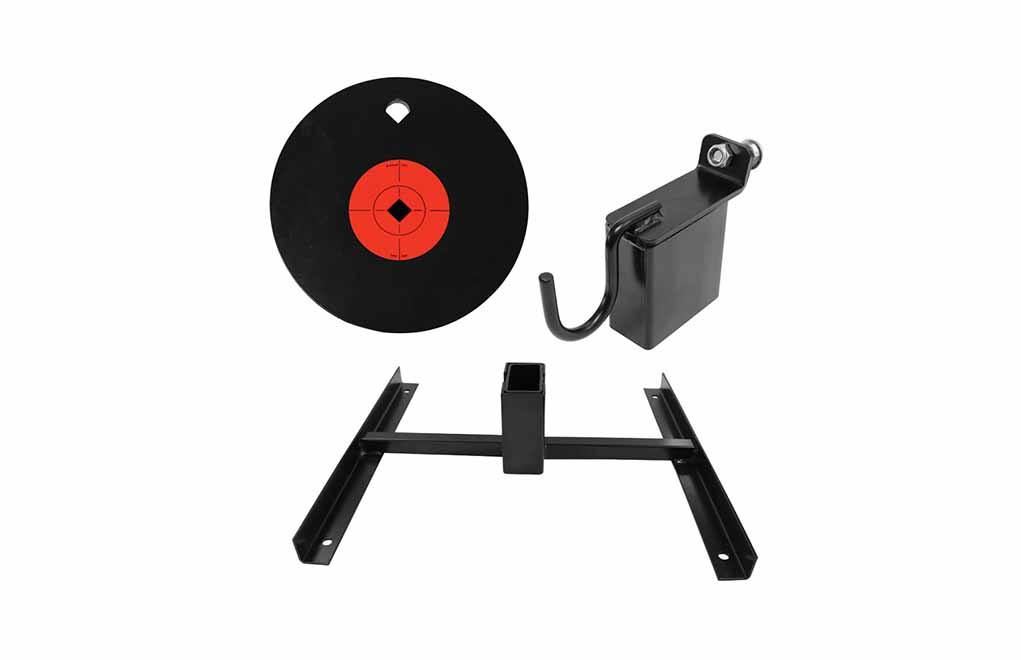
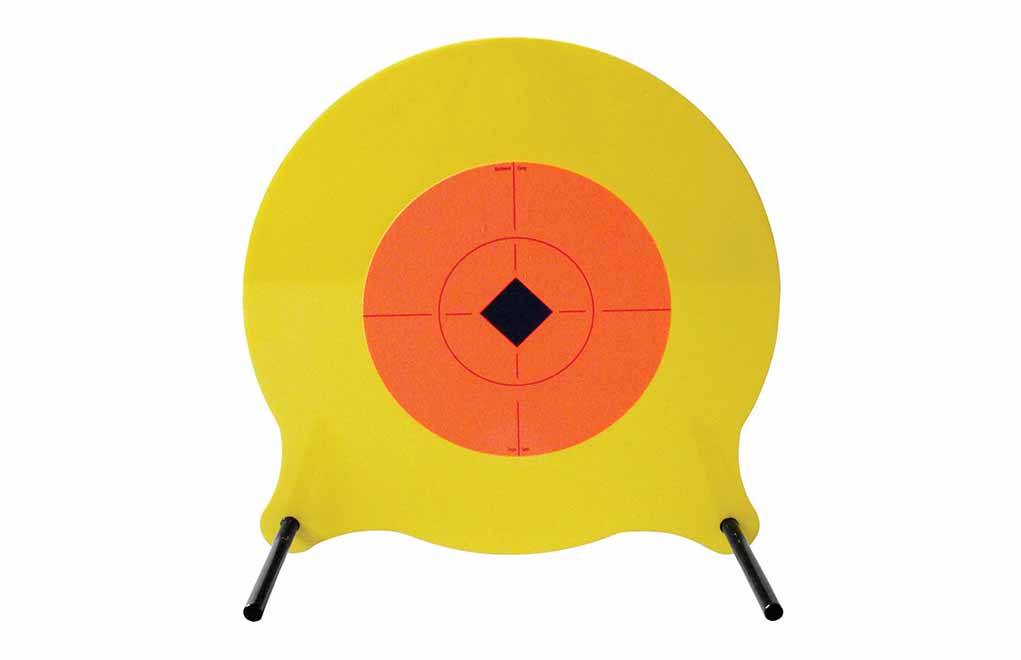
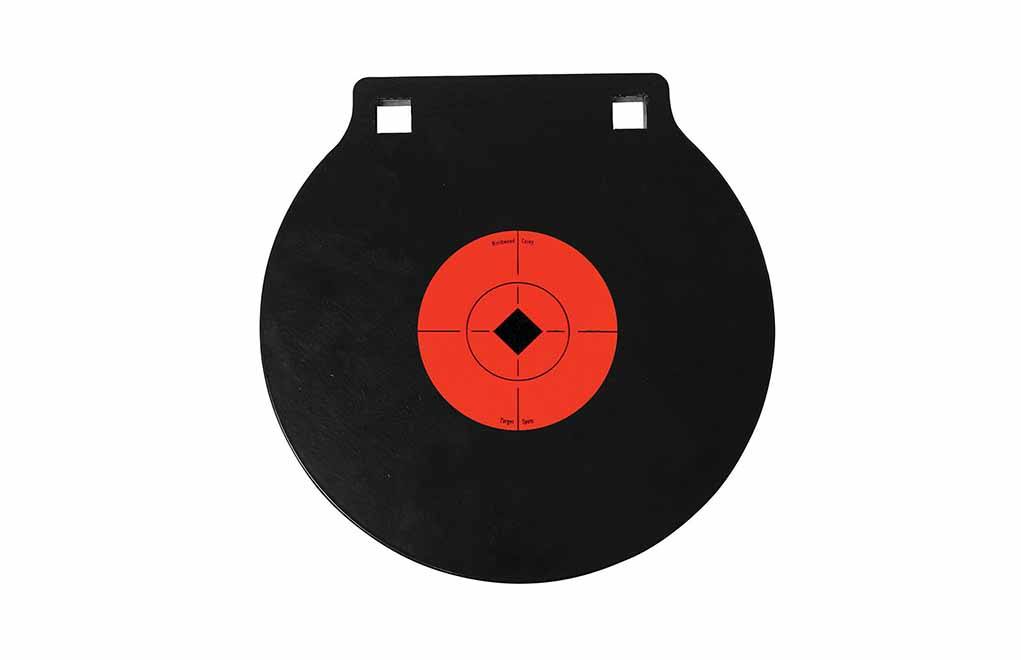
![Best Concealed Carry Guns In 2025 [Field Tested] Wilson Combat EDC X9S 1](https://gundigest.com/wp-content/uploads/Wilson-Combat-EDC-X9S-1-324x160.jpg)


![Best 9mm Carbine: Affordable PCCs [Tested] Ruger Carbine Shooting](https://gundigest.com/wp-content/uploads/Ruger-Carbine-Shooting-100x70.jpg)
![Best AR-15: Top Options Available Today [Field Tested] Harrington and Richardson PSA XM177E2 feature](https://gundigest.com/wp-content/uploads/Harrington-and-Richardson-PSA-XM177E2-feature-100x70.jpg)
